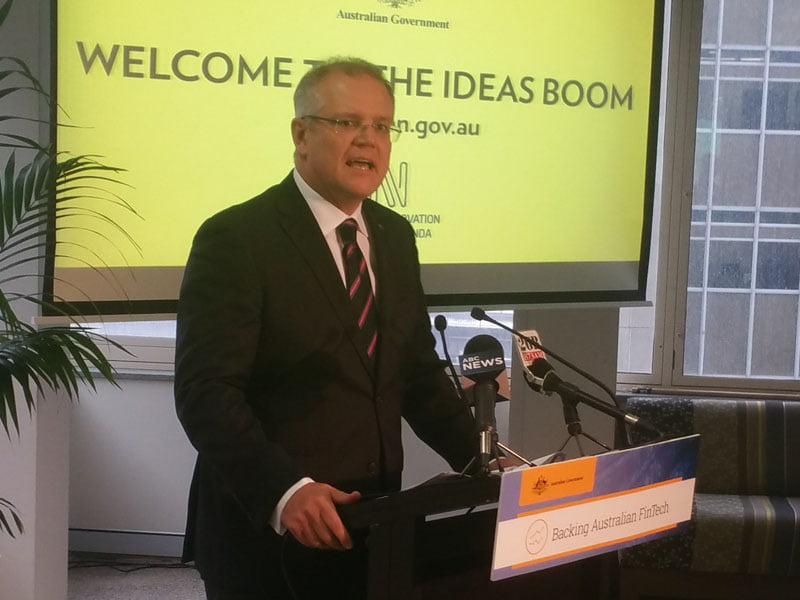Federal budget nights really are an expectations game. No-one ever gets everything that they want, and sometimes we get things that we specifically don’t want.
So really the only way to avoid disappointment on the night is to listen to the Treasurer in a Zen-like state, cleansed of expectation. And so it was on Tuesday night.
This budget had more in it for Australian tech and tech-enabled startups than it first appeared, but to hear it was to hear disappointment.

It is worth noting that nothing was taken away on budget night either, in relation to the National Innovation and Science Agenda, the real core of the Turnbull Government’s whole-of-economy innovation strategy.
The programs announced under the NISA – from Landing Pads to incubator support programs – are steady as she goes. Some have taken longer than others to get moving, but none have been specifically rolled back.
Consistency of policy is what the industry has craved (especially in an Industry portfolio that has had four different ministers since 2015). The simple fact that NISA has remained intact is a good thing.
This is a low benchmark for a win to be sure, but it is a win nonetheless.
There were a couple of glaring omissions from the innovation side of the budget that are driving people somewhat insane.
The first was no mention of the plans for the R&D Tax Incentive. This is troubling. The government has had its 3F review of the program – named for its authors Bill Ferris, Alan Finkel and Treasury secretary John Fraser – for fourteen months.
It has still not formally responded to the six recommendations in the report. Given that any major changes to the multi-billion dollar scheme would likely have a material budget impact, you might have reasonably expected it to see it dealt with as a part of the budget process.
The fact that it was not dealt with suggests they don’t yet have a plan, more than a year after a plan was recommended to them by three senior industry leaders. And that’s a real problem, causing uncertainty among users of the scheme.
For me, the most interesting thing in Scott Morrison’s speech was his aggressive timetabling for the introduction of an open banking regime in 2018, to give customers better access to their own data, and consequently empowering them to more easily change financial service providers.
This is potentially a huge win for FinTech and other disrupters. It’s interesting because it does not involve a lot of taxpayer money (it is a tiny rounding error on the overall budget), but is a regulatory lever with a big positive impact. That’s a beautiful thing and you can read more about it here.
The extension of the crowdsourced equity funding to include proprietary companies was a no brainer, and fixes the government’s first botched attempt at this (although it is somewhat hilarious that government has not attached even an aspirational date to its introduction.)
And the removal of double taxation on digital currency transactions was similarly considered a no-brainer (the double tax arrangement will be scrapped from July 1.) But it’s important signal to the market, and is likely to have a big immediate impact.
A similar change in Japan that took effect in April and immediately prompted Japanese payments providers to announce a substantial new investment to allow more than 250,000 Point of Sale terminals to accept digital currency payments by the end of this year.
“Importantly, it is not only digital currency businesses that will benefit from this change but the wider blockchain innovation sector”, said CEO of the Australian Digital Currency & Commerce Association, Nicholas Giurietto.
“Removal of the double application of GST supports the development of smart contracts and micro-payments that will underpin new business models using blockchain technology.”
The budget also gave shape to the APS Modernisation Fund, which included a tranche of $33.6 million to the Digital Transformation Agency to build platforms including its election commitment to provide a “Tell Me Once” service, as well as the crucial GovPass federated digital identity model.
But there was little more directed specifically at the startup sector, or any accompanying programs to go with its ‘jobs for the future’ mantra.
The reality is that government set an agenda in December 2015 through the National Innovation and Science Agenda in 2015. It talked-up a big game at that time – and funded it in the 2016 – and has stayed the course rather than greatly expanding the program.
The budget was disappointing for many. Groups like StartupAus and TechSydney were clearly underwhelmed not to have had the sector at least mentioned – let alone highlighted – by the Treasurer.
Clearly both the government and the opposition are getting the same polling data. It can’t be a main street priority. Because both sides are alive to the opportunities, but neither want to use the mainstream to build the case for investment in entrepreneurs.
There was more than expected in this budget. But the wins are in the fact that it has stayed the course on a series of programs it expects will deliver results.
The bummer – and it is an intense bummer – is that the Treasurer did not use the mainstream budget address to flag innovation and entrepreneurialism not just as an opportunity, but a critical component in our future.
The cultural change has to come from the leadership. Whatever tiny, incremental shifts in thinking now have the potential to have dramatic economic impacts in ten years.
Until the Prime Minister and the Treasurer are talking about these things in their mainstream conversations – and by extension having the Opposition Leader and the shadow treasurer doing the same – then we are in trouble.
It’s another lost opportunity. Not because a bucket of money needed to be delivered to the door of venture capitalists, but because the national imperative is stuck in weird political eddies.
Do you know more? Contact James Riley via Email.

